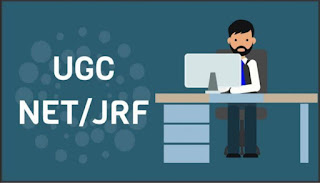ECONOMICS CHOICE OF INDICATORS
Morris, therefore, tried to look for those indicators, which were the results of the development
efforts, were not the values of particular societies as there could be non-market, non-urban,
non-industrial or non-plan ways to develop. They should create no problems in international
comparison. Out of hundred and odd indicators, he could find only three which could have
universal appeal as ends in themselves and meet the criteria laid down. These are:
1. Life Expectancy (LE)
2. Infant Mortality (IM)
3. Basic Literacy (BL)
These three indicators could be improved in a variety of ways. Whether a country should attain
higher life expectancy through better medical facilities or better sanitation or better nutrition, is
not really important. But it is universally accepted that a country should have high life
expectancy. Whether a country should have a higher rate of basic literacy through formal
channels or non-formal channels is not important. But a country should try to attempt for
higher level of literacy is the point. This is also almost universally accepted. Whosoever is born
will die, is accepted but those who have been born should not die as children in infancy. This is
the point generally accepted. Now, there is a technical issue. Normally, life expectancy at birth is
the index used. Infant mortality refers to deaths before age one. Therefore, Morris suggested
that life expectancy at age one should be used instead of life expectancy at birth. In case, the
figure for life expectancy at age one was not available, it could be worked out by using a formula,
which relates life expectancy at birth, infant mortality and the proportion of children.
Normalization of Indicators We know that life expectancy is measured in terms of years, infant
mortality rate in terms of per thousand and basic literacy rate in terms of percentage. They
cannot be simply added. Further, while basic literacy rate can have a natural zero for minimum
and 100 for maximum, there exist no natural minimum or maximum values for other
indicators. For the purpose of comparison, each of the levels should, therefore, be normalised.
Morris chose the best and worst levels in each of the three cases. In the case of positive
indicators of life expectancy and basic literacy, the best is denoted by the maximum and the
worst by the minimum. But, in the case of negative indicator of infant morality, the best is
represented by the minimum and the worst by the maximum. For converting the actual levels of
a positive variable into normalised indicators, first the minimum values are subtracted from
their respective actual values and then, the gap so obtained is divided by the range (between the
maximum and the minimum). In other words, for positive indicators:
Achievemnt Level = Actual Level-Minimum Level/Maximum Level-Minimum Level
For the negative indicator of infant mortality, first the actual value has to be subtracted from the
maximum value and then the gap has to be divided by the range. In other words.
Achievemnt Level = Maximum Level-Actual Level/Maximum Level-Minimum Level
Index Construction
There are, now, three such indicators. We may call them
1. Life Expectancy Indicator (LEI)
2. Infant Mortality Indicator (IMI)
3. Basic Literacy Indicator (BLI). These three indicators are averaged to give what is called
the Physical Quality of Life Index (PQLI):
PQLI = (⅓) (LEI + IMI + BLI)
Choice of Minimum and Maximum Values
As in the case of life expectancy and infant mortality, there exist no natural minimum and
maximum values, one has to choose reasonable values. After a lot of considerations, which need
not hold us, Morris chose the following set of values They may need revision in the light of
recent experience of countries. For example, maximum life expectancy could now be raised to
85 years. The conversions from values to indices are linear. Put the actual values of the country
in the expressions below and obtain the component indices as also the Physical Quality of Life
Index. The expressions are given below:
LEI = Actual Life Expectancy at Age 1 − 38/39
IMI = 229-Actual Mortality Rate/220
BLI = Actual Literacy Rate-0/100
Suppose for India, life expectancy at age one is 70 years, infant mortality rate is 70 per thousand
live births and adult literates constitute to be 55 per cent of adult population. Try step by step
and you will find that LEI is 0.82, IMI is 0.72 and BLI is 0.55. The PQLI is, therefore, about





